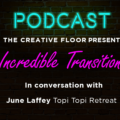‘Hope Stems’ art installation by McCann Health for Shatterproof seeks to change perceptions of addiction and reduce stigma
The US National Institute on Drug Abuse (NIDA) defines addiction as a chronic brain disease. Opioids actually change the chemistry in your brain, including the areas that are critical to judgment, decision making, and behavior control.
The goal of McCann Health’s non-profit client Shatterproof’s HopeStems campaign is to change the perception about opioid addiction and reduce stigma by letting the public know the medical truth. Opioid addiction is a brain disease, not a moral weakness. When addiction is treated as a disease, people who are addicted will feel less shame and be more likely to seek treatment, and ultimately recover.
The #HopeStems campaign uses flowers to bring hope by revealing the truth about opioid addiction: that it’s a chronic illness that changes the brain, and that recovery is beautiful. The art installation is in Herald Square, NY outside of the Macy’s Flower Show. Over three days the beautiful floral brain (9000 carnations) gets changed by black poppies (200 hand-made paper black poppies) that represent opioids.
On the final day, today, visitors will be asked to be part of the solution and remove a poppy. On every stem will be an anti-stigma message of hope. Through the public’s help, the floral brain will recover to its former beauty.
June Laffey chief creative officer of McCann Health New York says: “This campaign has the power to not only change the way people think about opioid addiction, but to save lives. Opioid addiction is not a weakness. It is a disease that changes the brain. There’s science to prove it. Hope stems from reducing the stigma and speaking with compassion. So let’s all speak with one voice. The more we reduce stigma, the more people will seek treatment and the more lives will be saved.”
Dr. Lipi Roy, M.D, M.P.H., addiction expert explains: “Opioids impact the most complex machine known to human kind – the human brain. Unfortunately, stigma remains a major barrier to care for most people with substance use issues. As an addiction medicine specialist, I remind people every day of two key points:
“1. Addiction is a chronic medical illness, a disease of the brain, where relapse is expected. Addiction is NOT a sign of moral weakness or failure.
2. Most people with addiction, once connected to the appropriate treatment and recovery services, GET BETTER.”






